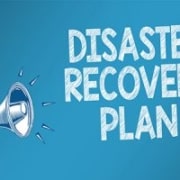Unlocking Business Success: The Power of Financial Literacy for Entrepreneurs
As entrepreneurs and small business owners, you wear many hats, from marketing mavens to product developers. It’s impossible to be an expert in every aspect of your business. Still, there is one area that will pay huge dividends on the investment of time you make: financial literacy.
Financial literacy isn’t just about crunching numbers. It’s about understanding those numbers well enough to steer your business in the right direction. And in the unpredictable world of business, that understanding is priceless.
In this post, we’ll delve into the importance of financial literacy for small business owners, highlighting how mastering the basics can lead to smarter, more informed business decisions. So, whether you’re a seasoned business owner or just starting out, let’s embark on this financial journey together.
The Direct Impact of Financial Literacy on Business Success
Financial literacy is more than just a buzzword; it’s a foundational skill that can make or break a small business. Let’s dive into how understanding the financial ropes directly influences your business’s success.
Improved Cash Flow Management
Cash is the lifeblood of any business. A U.S. Bank study found that a whopping 82% of small businesses fail due to poor cash flow management1. By understanding the nuances of your cash inflow (sales, investments) and outflow (expenses, purchases), you can predict potential shortfalls and take proactive measures. It’s not just about making money; it’s about ensuring that money is available when you need it.
Informed Decision Making
Have you ever been of two minds about investing in new equipment or hiring more staff?
Financial literacy equips you with the tools to make these decisions confidently. By understanding your financial statements, you can gauge the health of your business, assess profitability, and determine the feasibility of big-ticket expenses. It’s like having a financial compass guiding you toward decisions that align with your business goals.
Risk Management
Every business faces financial risks like fluctuating market conditions or unexpected expenses. Being financially literate equips you to identify those risks early on.
For instance, if you’re aware of market trends, you might foresee a potential dip in sales and adjust your spending accordingly. Or, by regularly reviewing your financial statements, you might spot irregularities that could indicate fraud. Financial literacy acts as your business’s early warning system, helping you navigate potential pitfalls.
The Indirect Benefits of Financial Literacy
While the direct impacts of financial literacy, like cash flow management and risk assessment, are often in the spotlight, the indirect benefits can be just as transformative for small business owners. Let’s delve into these often-overlooked advantages.
Enhanced Confidence in Decision Making
When you understand your finances, you’re not just making decisions; you’re making informed decisions. Imagine being at a crossroads, unsure of which path to take. Financial literacy is like having a map, giving you the confidence to choose the right direction.
Better Relationships with Financial Institutions
Banks and creditors love working with informed clients. When you demonstrate a clear understanding of your financial position, it not only makes their job easier but also builds trust. This can lead to better loan terms, faster approvals, and even potential partnerships. Think of it this way: would you rather lend money to someone who knows exactly how they’ll pay you back or someone who’s just hoping for the best?
Long-term Business Sustainability
Financial literacy isn’t just about the here and now; it’s about the future. By understanding financial trends and the broader economic landscape, you can make strategic plans for growth and expansion. It’s like planting seeds today for a harvest tomorrow. Businesses prioritizing financial education tend to have a more sustainable growth trajectory, ensuring they’re not just a flash in the pan but a lasting presence in the market.
How to Improve Your Financial Literacy
Improving your financial know-how is more accessible than you might think. Here are some ways to chart your course to become more financially savvy.
Educational Resources
The digital age has blessed us with many resources at our fingertips. From online courses on platforms like Coursera and Udemy to insightful books like “Financial Intelligence for Entrepreneurs” by Karen Berman and Joe Knight, there’s no shortage of material to dive into.
Hiring a Professional
Sometimes, the best way to learn is from someone who’s been there and done that. Consider hiring an accountant or financial advisor, even just for a few consultation sessions. They can provide personalized insights, answer specific questions, and guide you through the intricacies of your business’s finances.
Plus, having an expert on speed dial can be a game-changer during those “I’m not sure what to do” moments.
Continuous Learning
The financial landscape is constantly evolving. Regulations change, new tools emerge, and market dynamics shift. Dedicate some time each month to stay updated. Subscribe to financial news outlets, join business forums, or attend workshops. By committing to continuous learning, you ensure that your financial knowledge doesn’t just grow but stays relevant.
In essence, improving financial literacy is a journey, not a destination. Whether you’re diving into online courses, seeking expert advice, or simply staying updated, every step you take strengthens your business’s foundation.
If you focus on developing and maintaining your financial literacy, the positive impact on your business will be profound.
If you’d like to have a conversation to help you get started, book a free consultation. We’d be happy to offer some advice.









